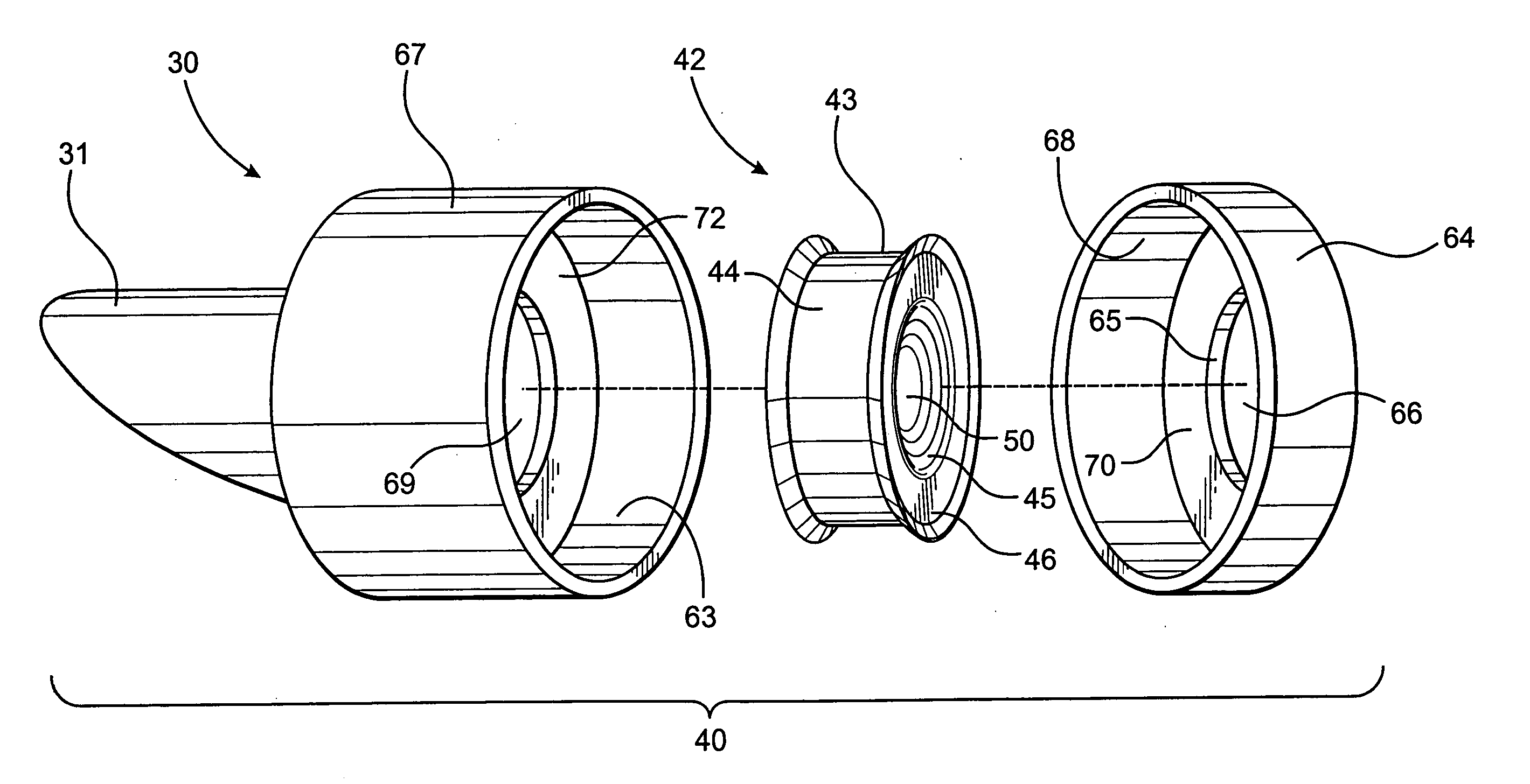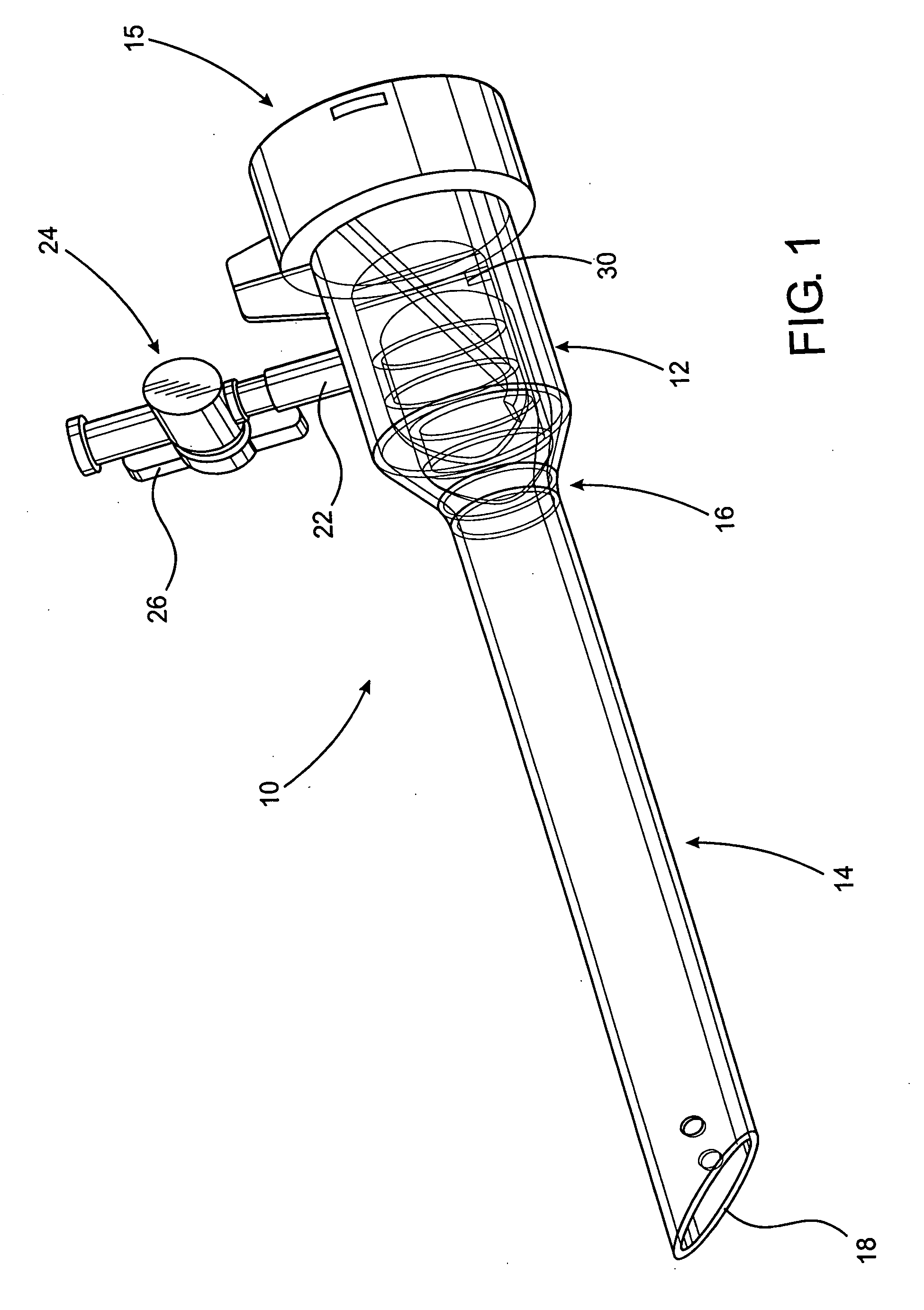Floating seal assembly for a trocar
a floating seal and trocar technology, applied in trocars, medical devices, other medical devices, etc., can solve the problems of damage to previously known sealing mechanisms, and achieve the effect of sufficient flexibility and elasticity, sufficient flexibility and/or elasticity
- Summary
- Abstract
- Description
- Claims
- Application Information
AI Technical Summary
Benefits of technology
Problems solved by technology
Method used
Image
Examples
Embodiment Construction
)
[0054] The present invention is directed to a seal assembly that is primarily structured to be used with a trocar, as shown in FIGS. 1 and 10, or a like device associated with the introduction of medical instruments through anatomical tissues and into the body cavity of a patient, such as during laparoscopic surgery. It is to be understood at the outset that the present invention is susceptible of embodiment in different forms. While there is shown in the drawings and will be described in detail herein at least one specific embodiment, it is with the understanding that the present disclosure is to be considered as an exemplification of the principles of the invention which should not limit the invention to the embodiment or embodiments illustrated.
[0055] With initial reference to FIG. 1, there is illustrated one possible type of a trocar assembly, indicated generally as 10, with which the seal assembly of the present invention may be used. The present invention is, however, readil...
PUM
 Login to View More
Login to View More Abstract
Description
Claims
Application Information
 Login to View More
Login to View More - R&D
- Intellectual Property
- Life Sciences
- Materials
- Tech Scout
- Unparalleled Data Quality
- Higher Quality Content
- 60% Fewer Hallucinations
Browse by: Latest US Patents, China's latest patents, Technical Efficacy Thesaurus, Application Domain, Technology Topic, Popular Technical Reports.
© 2025 PatSnap. All rights reserved.Legal|Privacy policy|Modern Slavery Act Transparency Statement|Sitemap|About US| Contact US: help@patsnap.com



